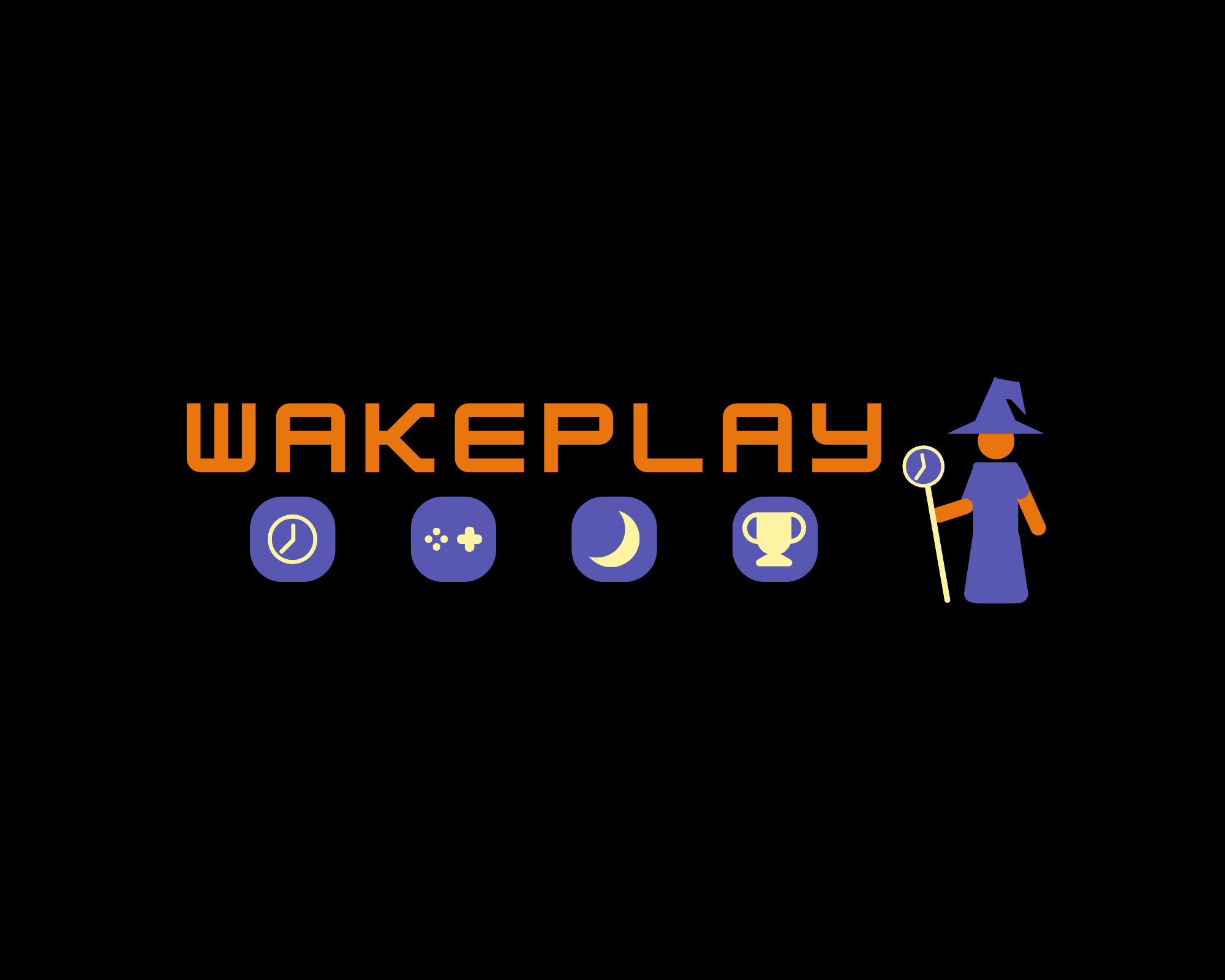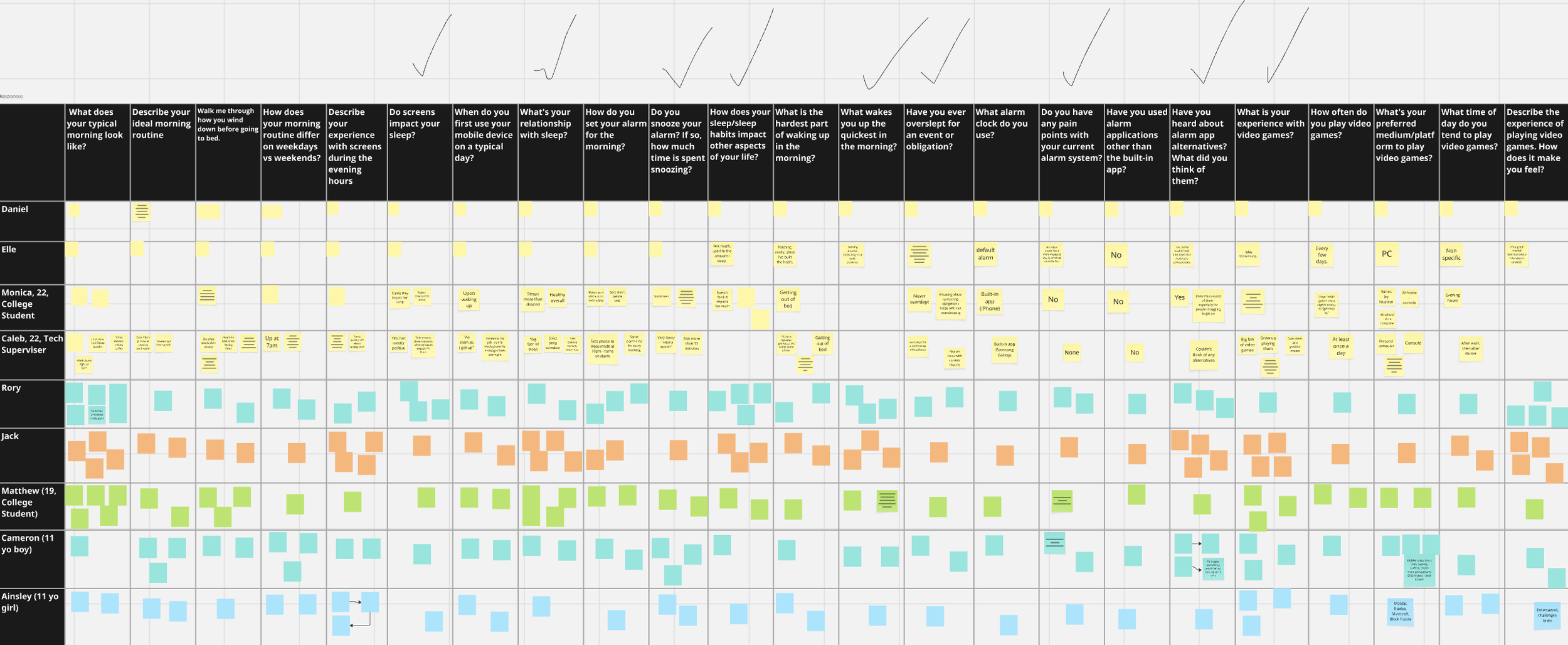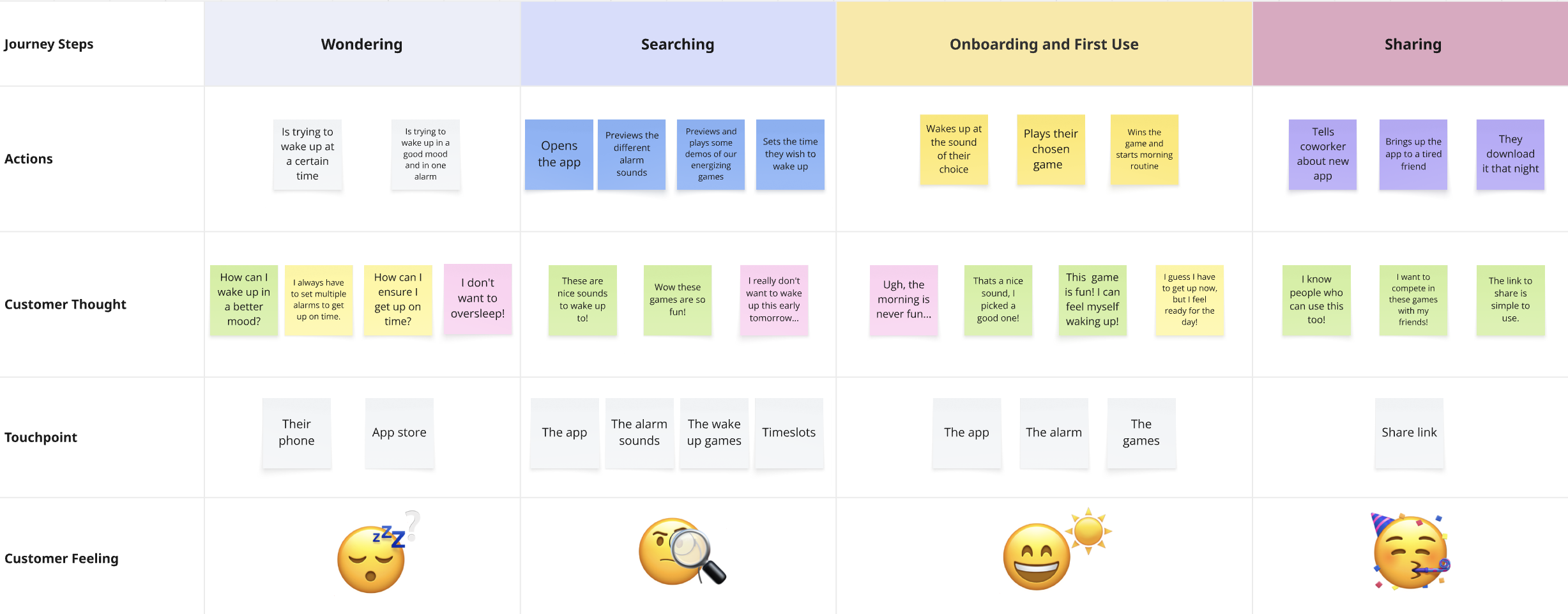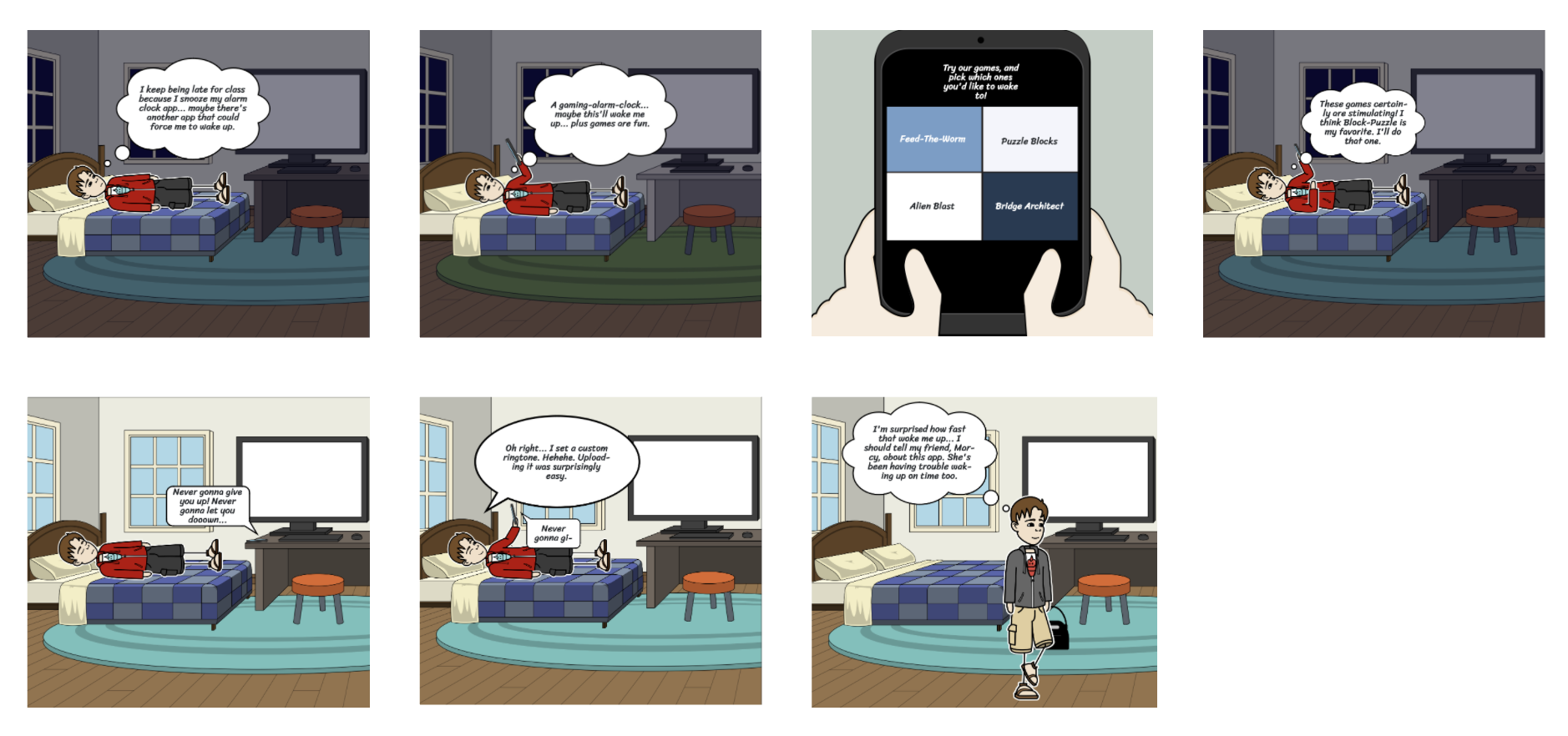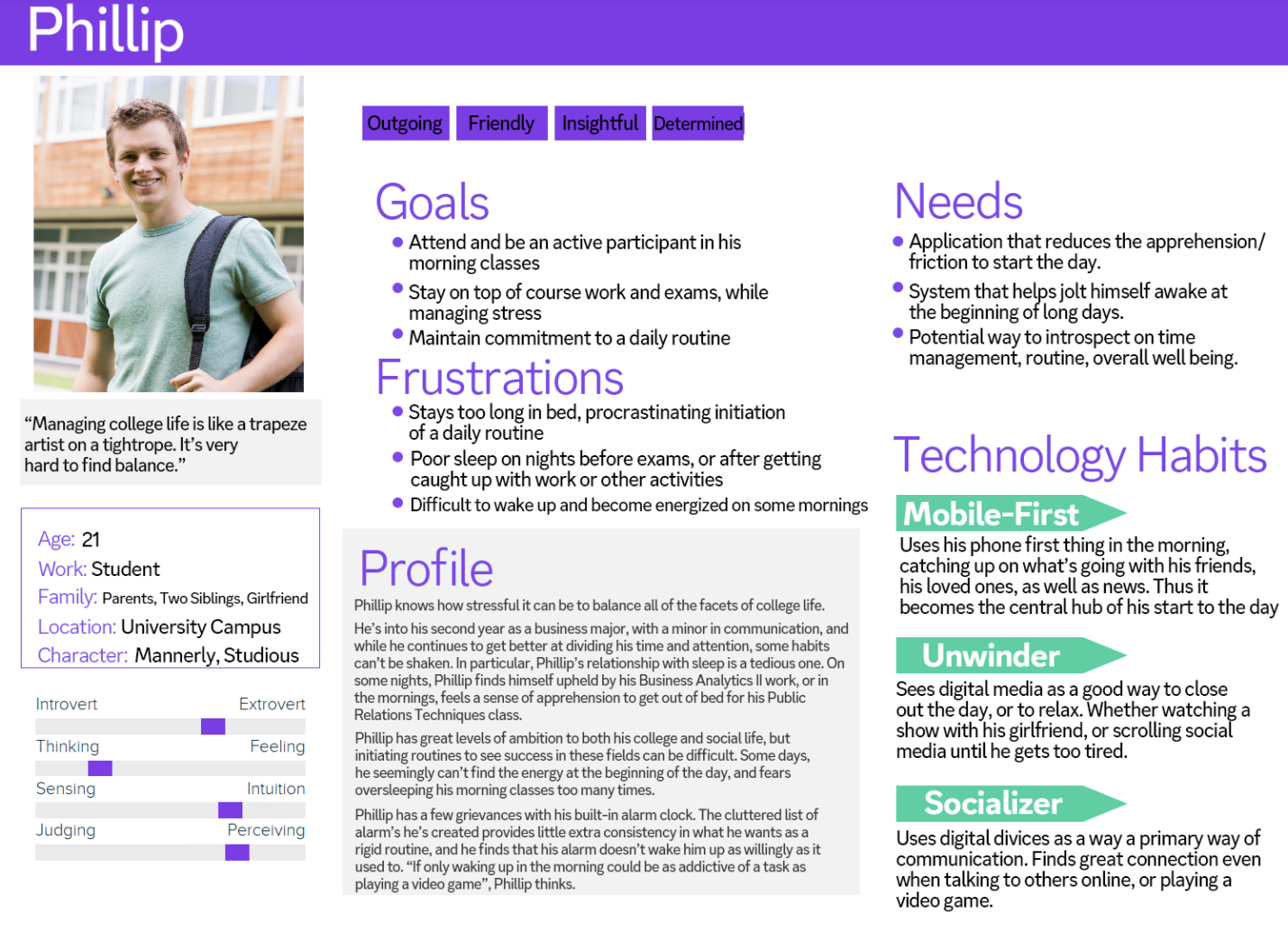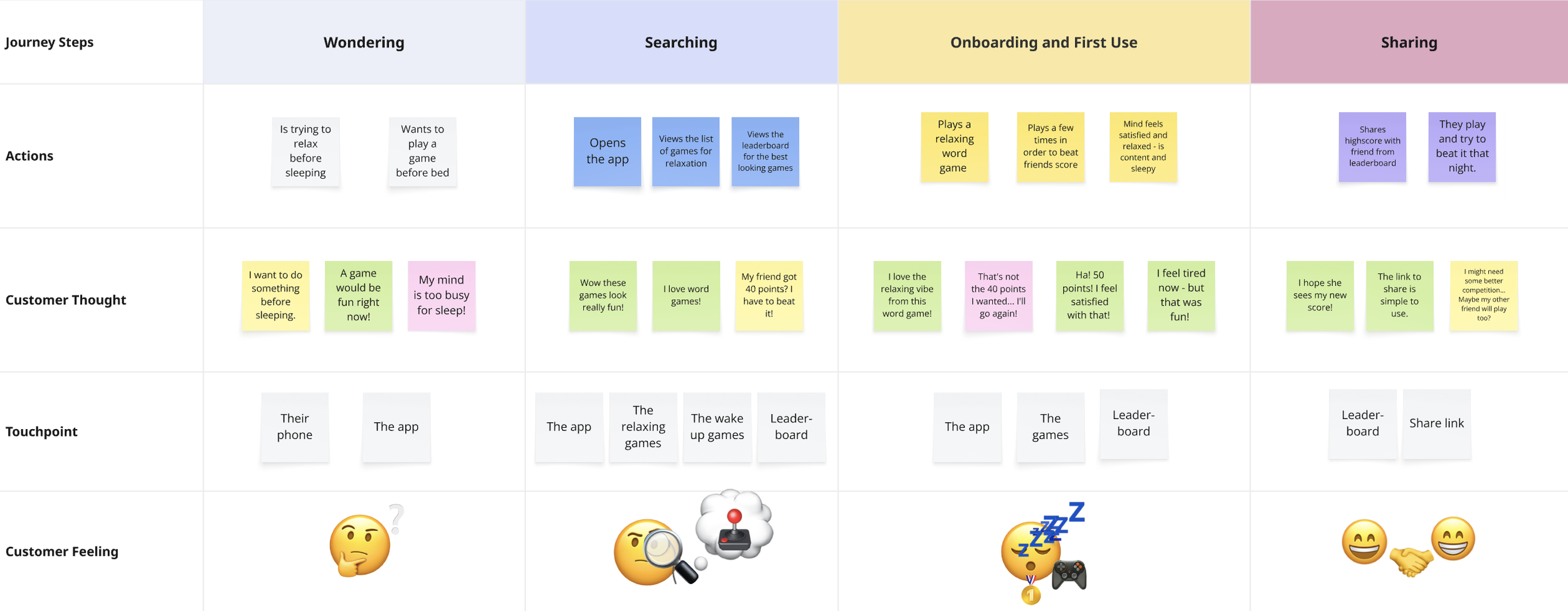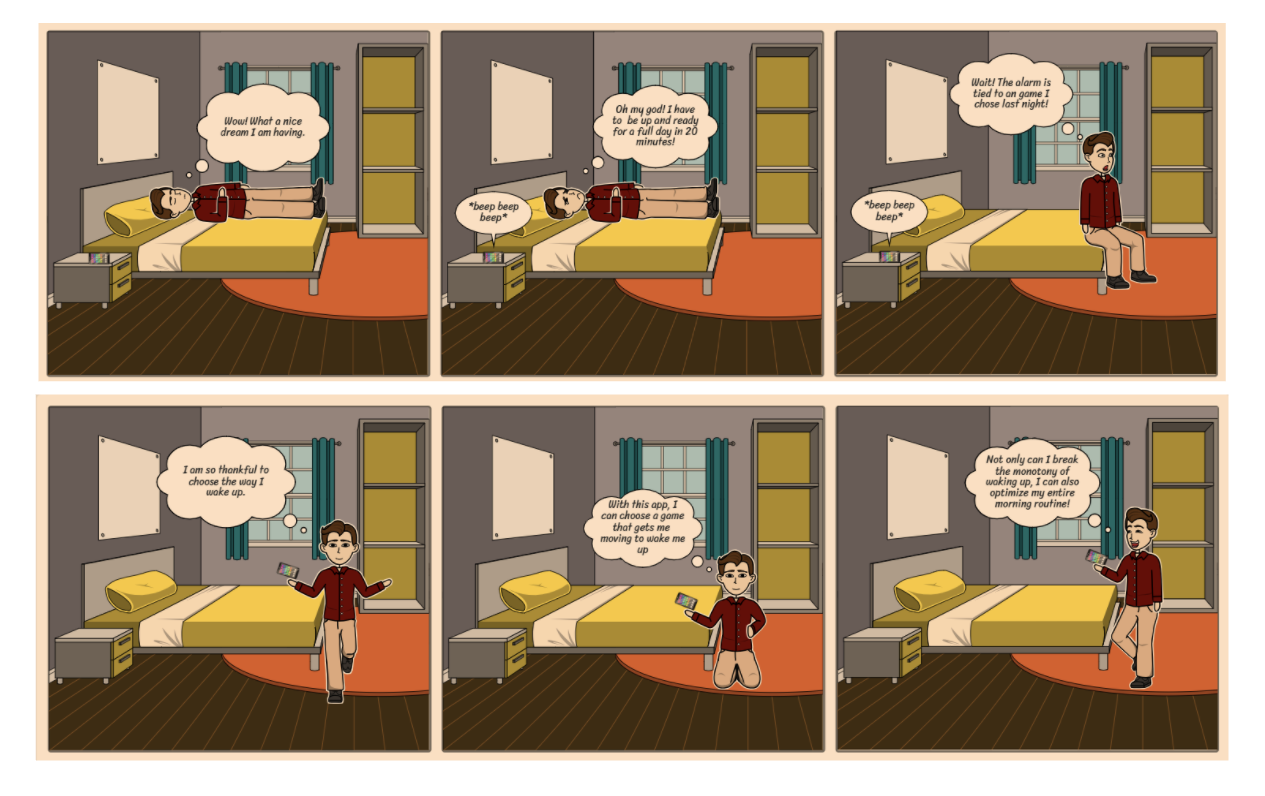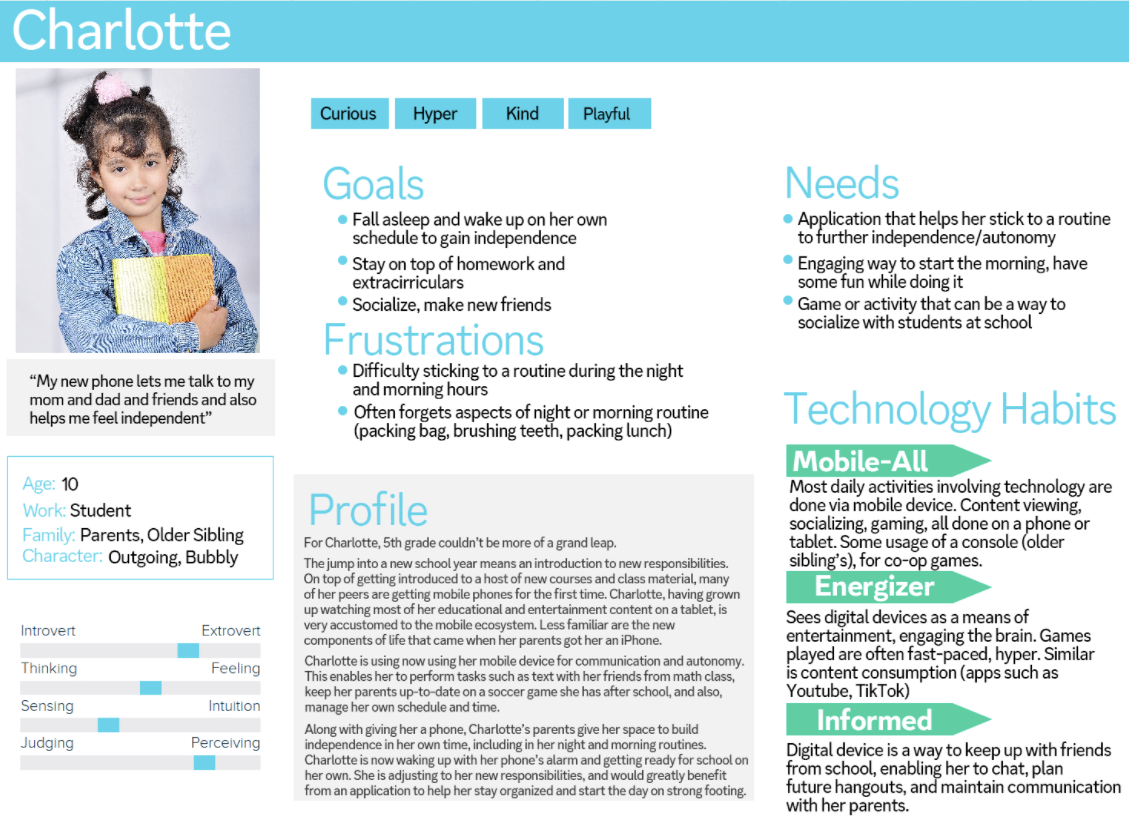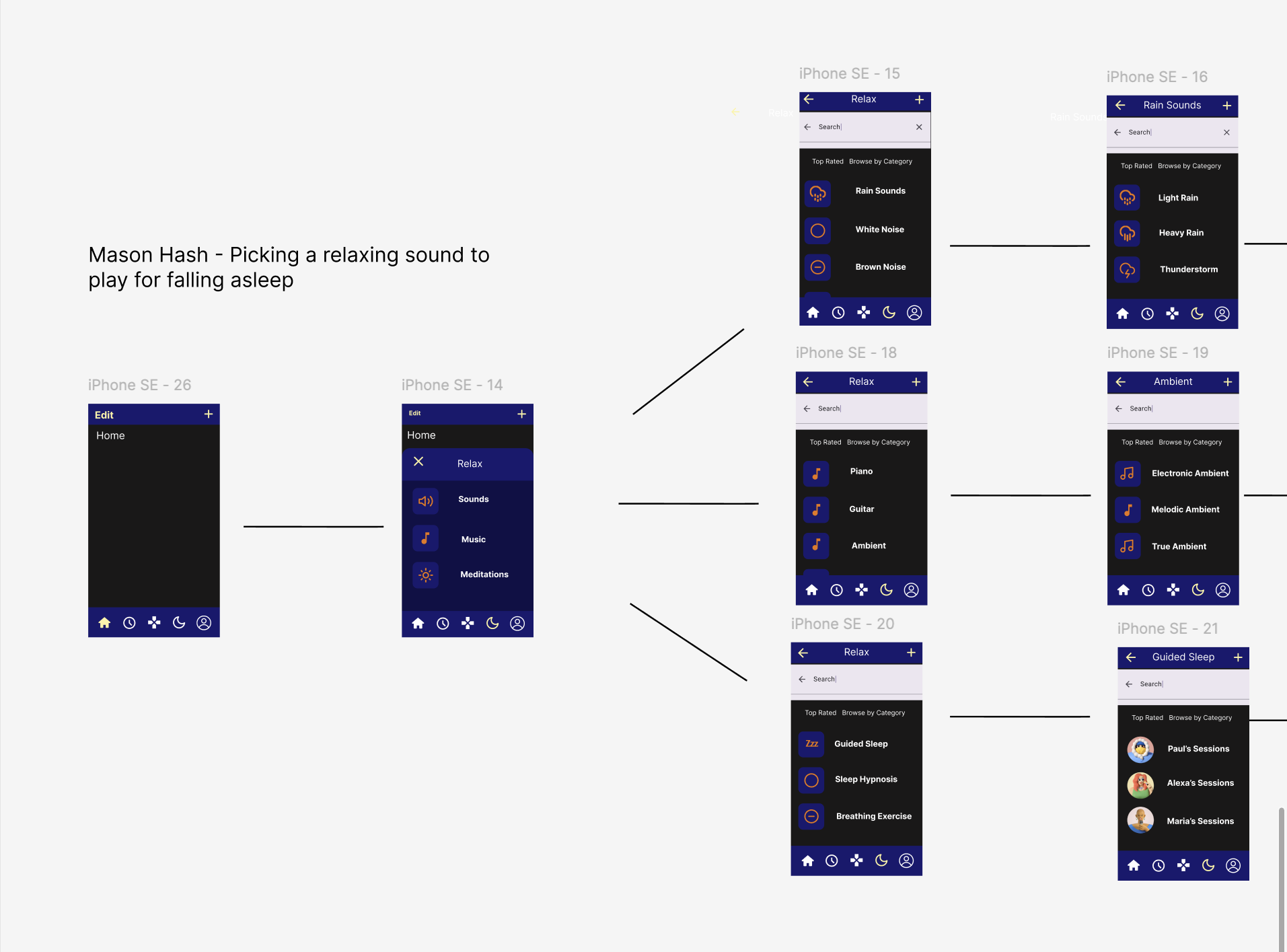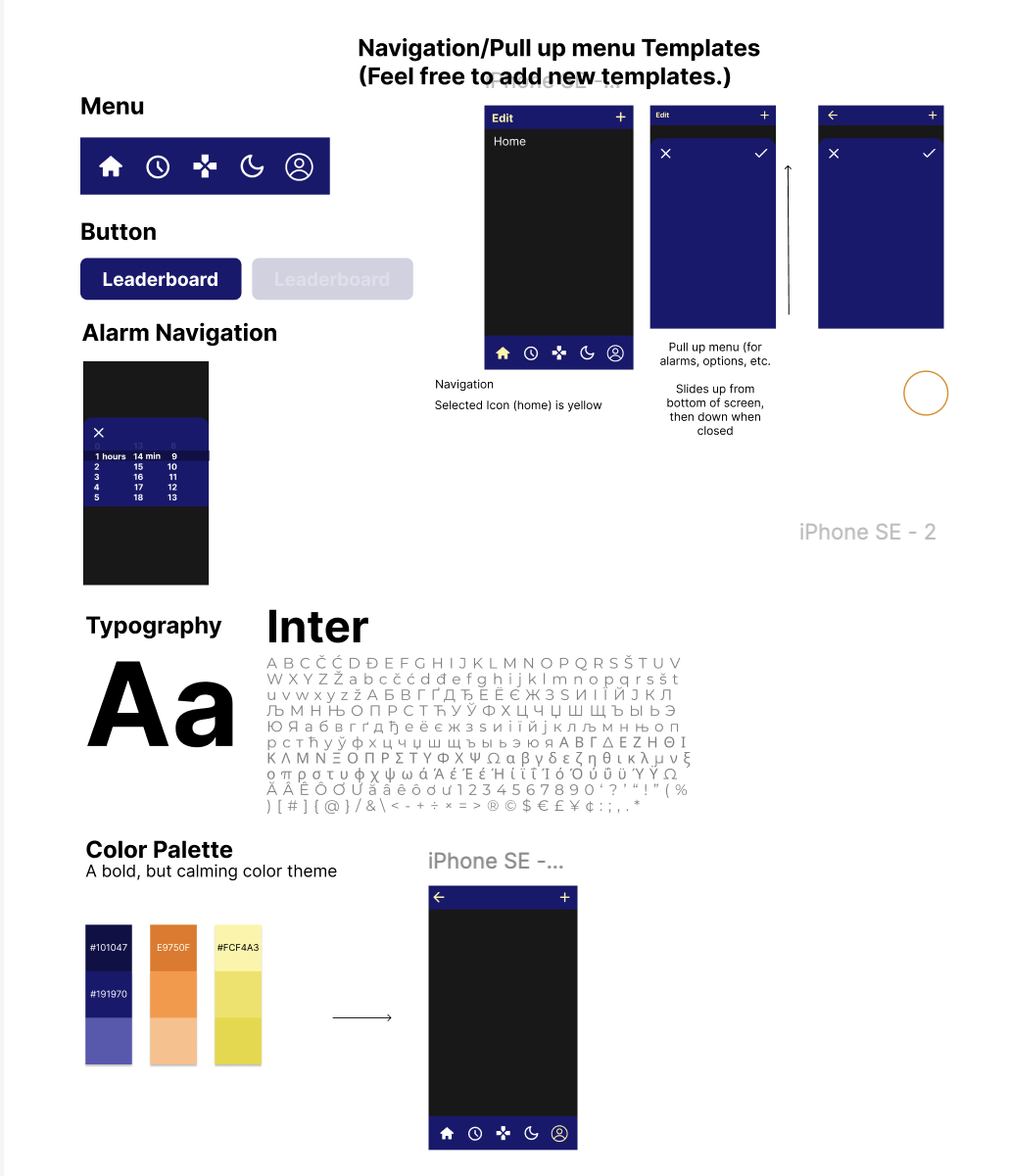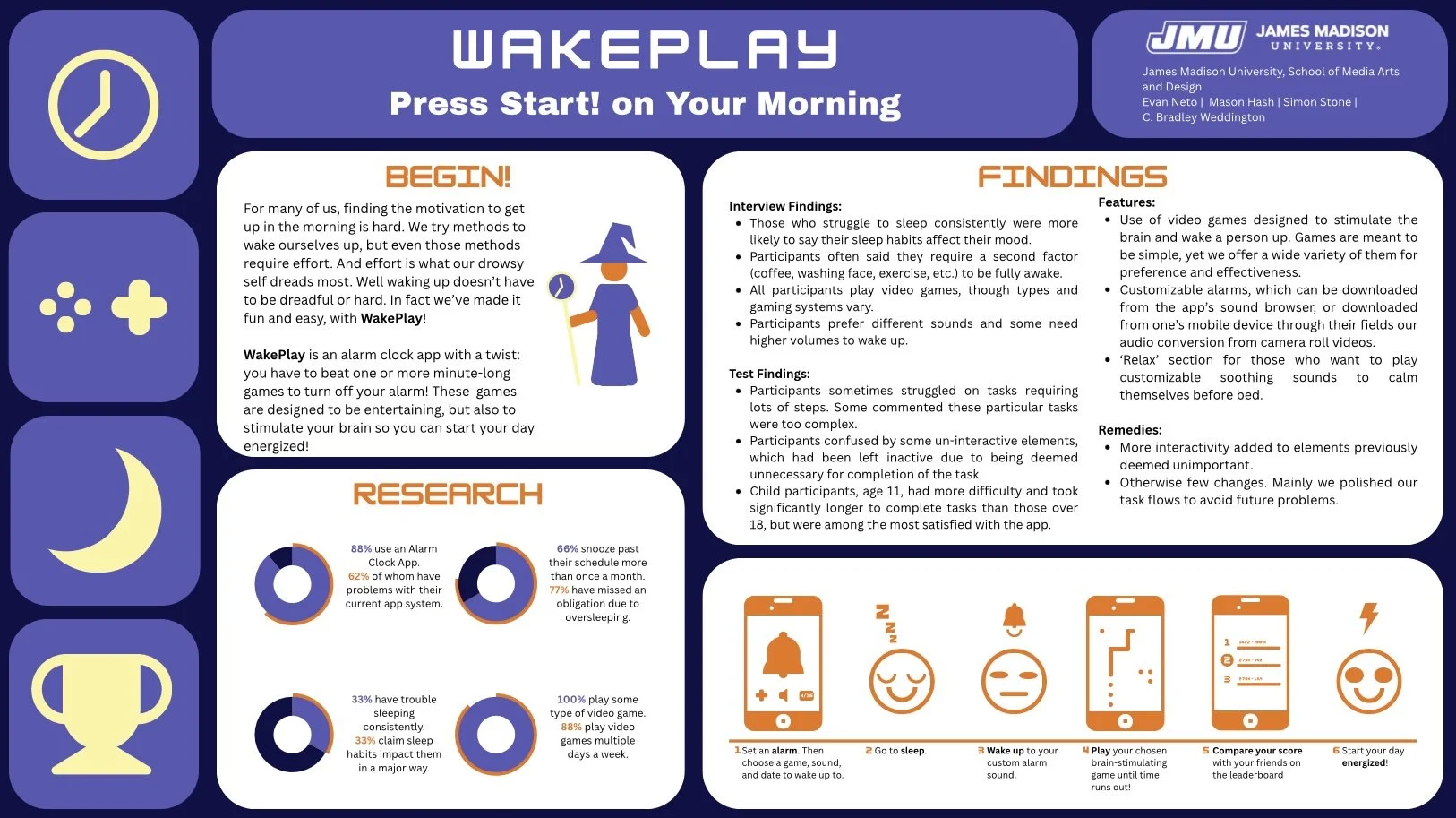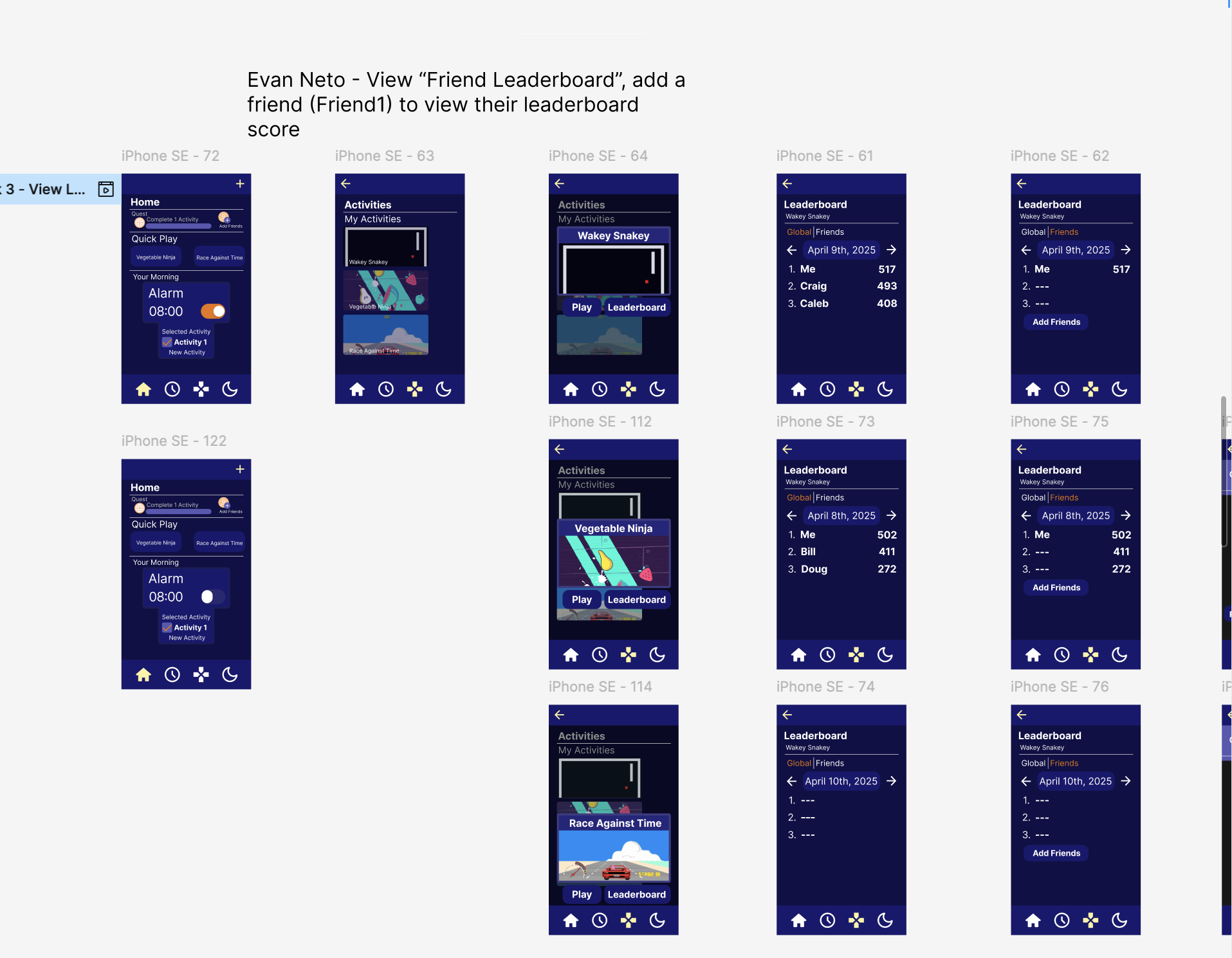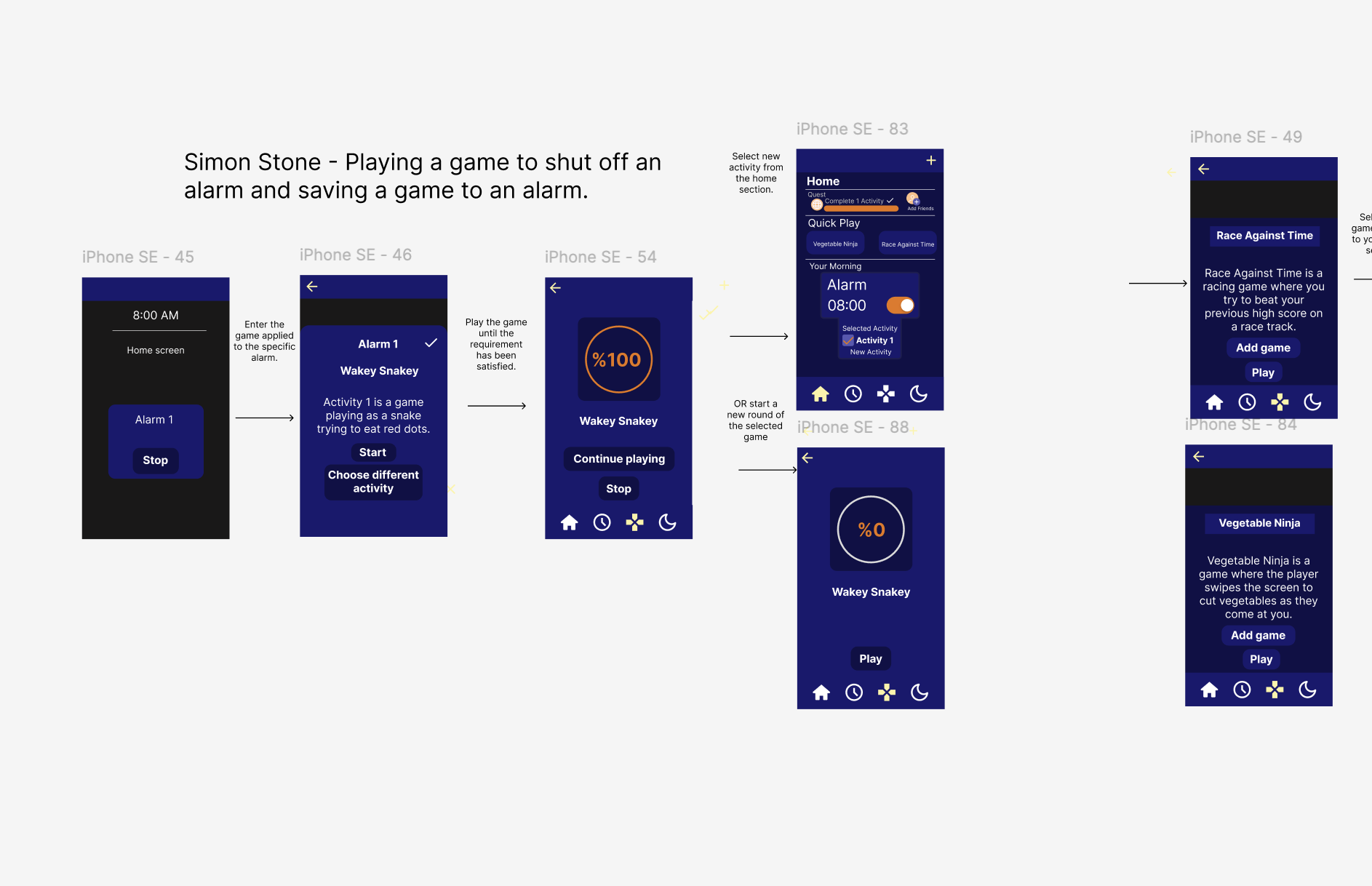Wakeplay
Increasing user wakefulness and engagement through a customizable alarm clock app requiring users to beat short video games to silence their alarm indefinitely.
Role
UX Designer
Researcher
Visual Designer
Tools
Figma
Canva
Miro
Team
Mason Hash
Evan Neto
Simon Stone
Brad Weddington
Project Type
Figma Prototype
Background
Our team chose to build an alarm clock app with a built in gaming system, requiring users to start a game or puzzle to shut off their alarm and complete it to prevent the alarm from going off again.
Context
Every member of our team has struggled with snoozing in the past and wishes they didn’t have to set multiple alarms to wake them up.
Design Questions
-How to keep users engaged with the gamified aspect, so waking up becomes less of a chore?
-How might we cater to the needs of those with inconsistent sleep patterns?
-How might we implement the alarm and gaming elements in an easily understandable way?
THE PROCESS
We formed a research group of 8-10 people, primarily young adults and children.
We used Miro to pool our findings via their sticky note function.
From there, we put together two Journey Maps and Storyboards to help us develop a Primary and Secondary Persona.
Primary Persona: The Diligent Student
Secondary Persona: The Enthusiastic Gamer
Visual Design
We wanted the user to associate our app with sleep, and figured midnight blue and moonlight yellow would evoke that sort of “sweet dreams” vibe. We added orange as a bonus third color.
While Evan made the chart for our design themes and Wakeplay Logo, I put together our Digital Research Poster in Canva.
We planned the app around 4 core features: An Alarm Clock w/ customizable Sounds, A Games Database, the Relaxing Sound Database, and a Social Tab.
I was to create the prototype for the Alarms Page.
Hi-Fidelity Prototype
The Alarms Tab featured the ability to customize one’s waking experience. The user has the ability to:
Select from custom alarm sounds and music. These sounds can be selected from the app’s database or uploaded from a person’s files or videos on someone’s camera roll.
Select a game from Wakeplay’s games database.
Choose which days the alarm should repeat.
The Activities feature allows users to play games before choosing which they want to assign to an alarm by
Choosing from a list of games from the database.
Adding them to a preexisting alarm.
Comparing their scores to other players’.
The Relax feature allows users to set relaxing sounds to help them fall asleep. These can be downloaded from:
A relaxing sound database
Their own camera rolls
Their own files

